![]()
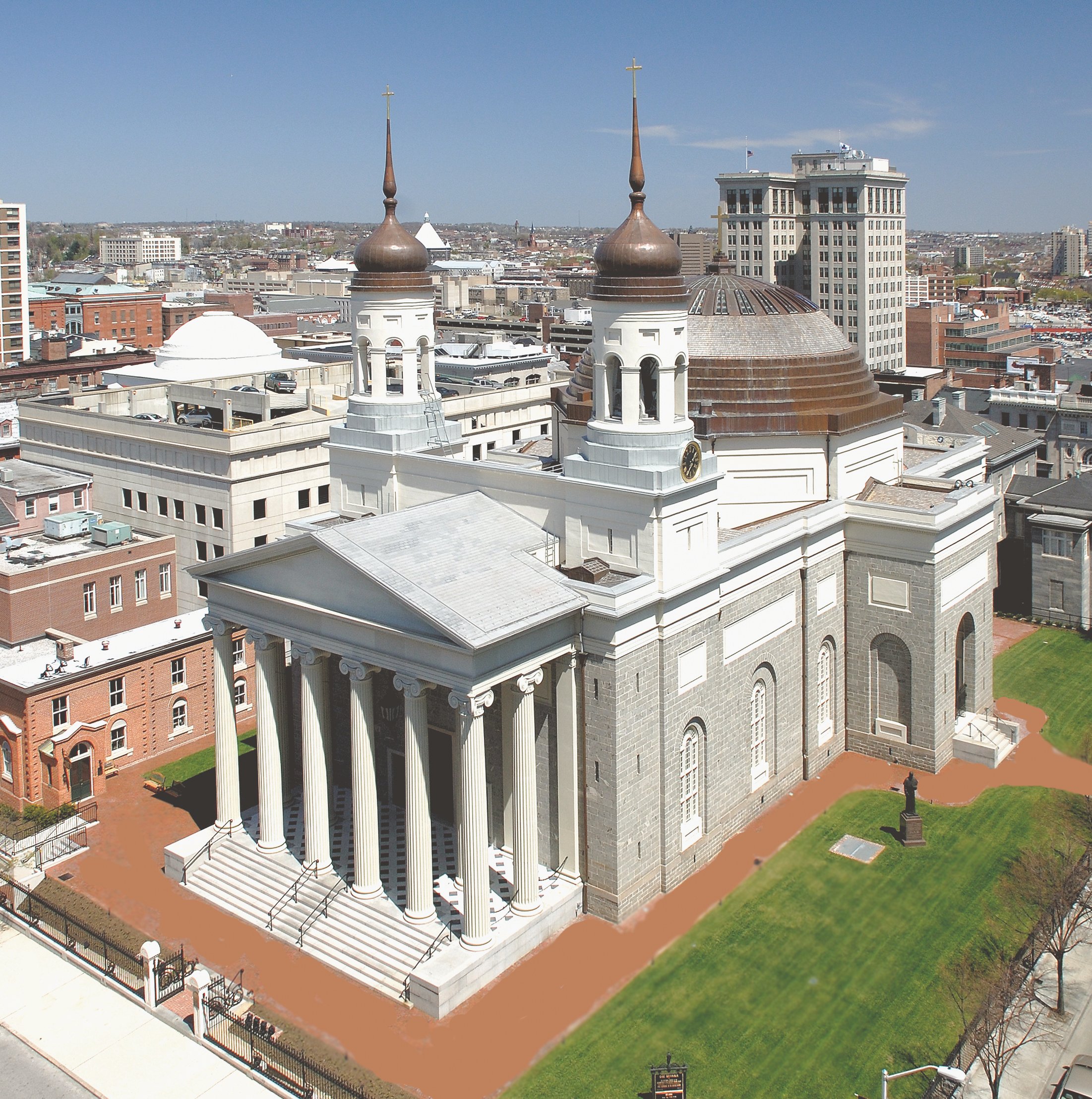
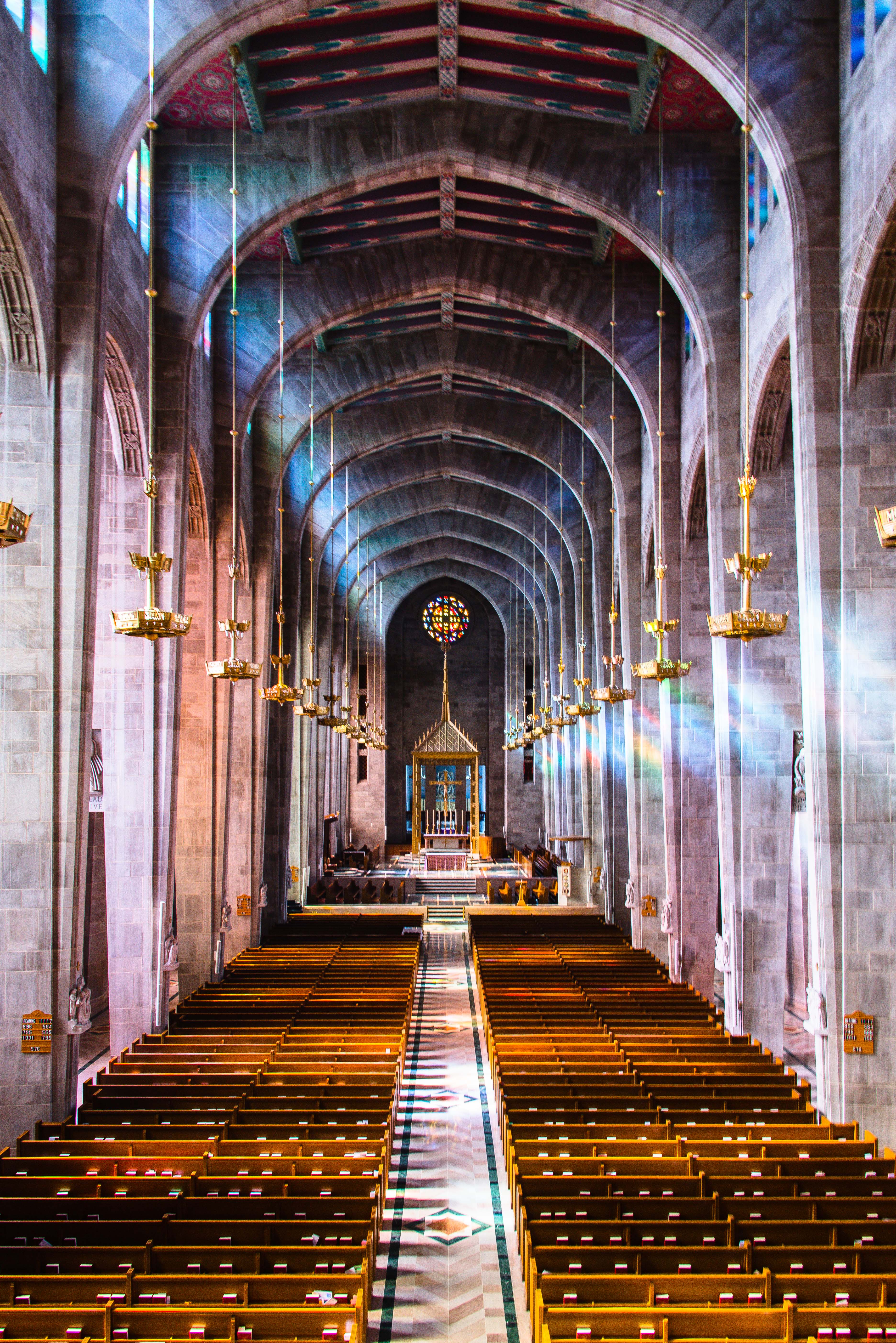
![]()
Encounter Catholic American history in the City of Baltimore! Discover American Catholic heritage anew as you explore the primordial see of the Catholic Church in America. Visit Baltimore's significant churches - The Basilica of the Assumption (“America's First Cathedral”) and the Cathedral of Mary, Our Queen. Encounter the deep faith in Jesus that inspired the Maryland founders to charter land for religious freedom! Experience the Maryland Science Center or the National Aquarium!
“The Lord has made his victory known; has revealed his triumph in the site of the nations, he has remembered his mercy and faithfulness…” - Psalm 98:2-3
Catholic History in Maryland
Maryland has a significant place in the history of American Catholicism. Roman Catholics found sanctuary in the Province of Maryland where they were able to practice their faith freely. Wanting to provide religious freedom for Catholics, George Calvert (1579-1632) of Yorkshire, England, endeavored to secure land in the Chesapeake Bay region of the new world. This would later become Maryland. Calvert was born Protestant but later became Catholic. Calvert, given the title Baron of Baltimore by King Charles I of England, petitioned the king for the land. The acquisition of the land was not finalized, however, until after Calvert's death. Claim of the land fell to George's son, Cecilius Calvert, Second Lord of Baltimore. Cecilius Calvert oversaw a voyage to the New World to settle this land. The province of Maryland was settled in 1634. Maryland is named after Queen Henrietta Maria, wife of Charles I. The Act of Toleration was passed by the Maryland colonial assembly in 1649, endeavoring to ensure religious liberty in Maryland.
The City of Baltimore was founded in 1729, as a strategic port city for the shipment of grain and tobacco. Nearby waterways were used for flour milling. Baltimore gets its name from the Calvert family who had been granted the Barony of Baltimore - an Irish title of nobility, named after the Baltimore Manor in County Longford, Ireland.
Archbishop John Carroll and St. Peter's Pro-Cathedral
The Church of St. Peter's was built in Baltimore in 1770 to serve the growing number of Catholics in the area. Once situated off the west side of the 300 block of Charles Street at Saratoga Street, the Church of St. Peter's is no longer standing.
When the Diocese of Baltimore was established in 1789, the Rev. John Carroll, S.J., was selected to be bishop of America's first episcopal see, the “Premier See.” A Maryland native, John Carroll was born in Upper Marlboro. Fr. Carroll was consecrated a bishop at the Chapel of St. Mary at Lulworth Castle in south-central England. Returning to Maryland, Carroll served as Bishop and Archbishop until his death in 1815. In 1808, the Diocese of Baltimore was elevated to the status of Archdiocese, thereby making Carroll Archbishop of the country's primordial see.
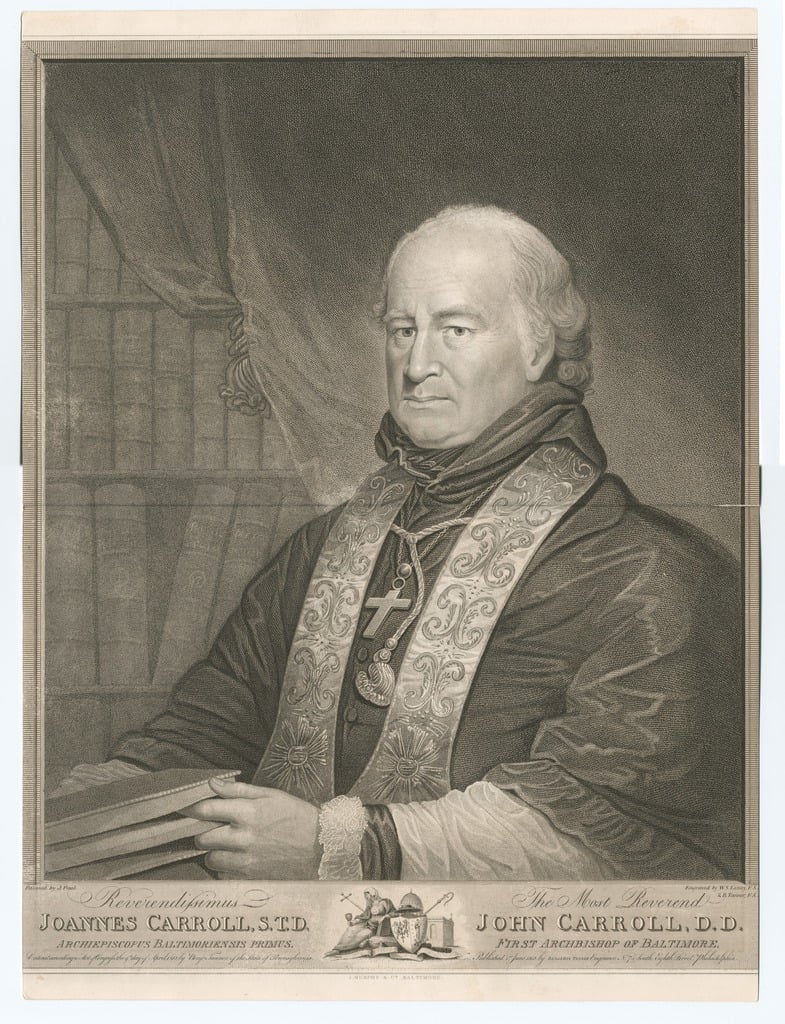
Archbishop John Carroll- Public Domain
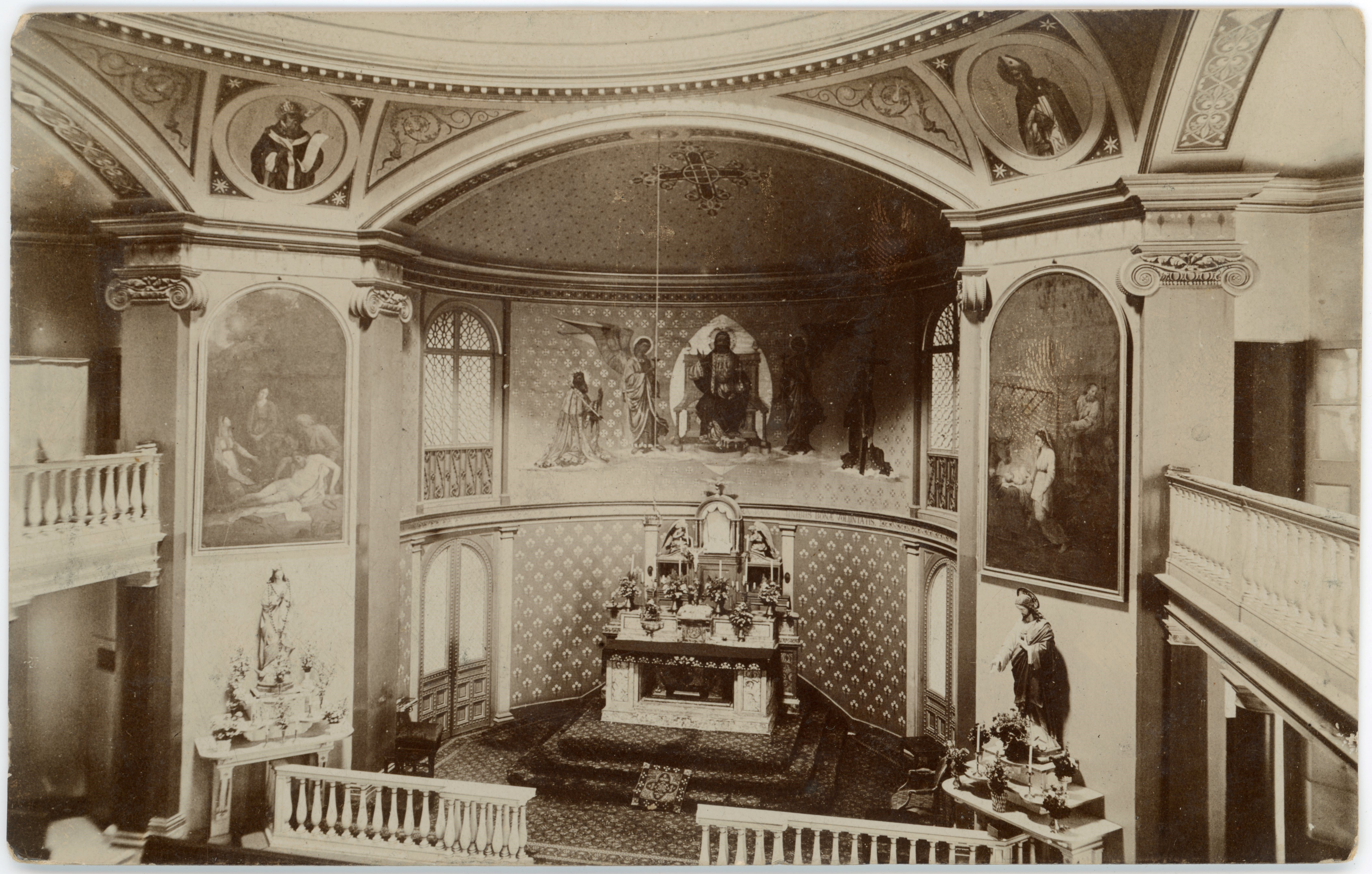
The Chapel at Lulworth Castle, where Father Carroll was consecrated a bishop.
Photo credit: The Chapel of St. Mary, Lulworth Castle: https://www.flickr.com/photos/alwyn_ladell/48744123552/in/photostream/
In the early days of his episcopate, the Church of St. Peter's became the “pro-Cathedral” for Bishop Carroll. It would serve as his Cathedral until his death. Groundbreaking began for the new Cathedral (now Basilica) for Bishop Carroll in 1806. Click here for more on St. Peter's Pro-Cathedral https://www.archbalt.org/the-archdiocese/st-peters-pro-cathedral/.
For more on the life of Archbishop John Carroll, see here: https://www.archbalt.org/most-rev-john-carroll/
Religious Persecution in Maryland
“If the world hates you, realize that it hated me first” (John 15:18)
Although Maryland was initially founded as a haven for religious expression, particularly for Catholics, religious freedom was again threatened. By 1704, anti-Catholic legislation from England forbade public worship by Catholics and closed Catholic schools. It wouldn't be until the Bill of Rights was formally ratified in 1791 that religious freedom would again be protected.
To discover more on the history of the Archdiocese of Baltimore, click here: https://www.archbalt.org/the-archdiocese/our-history/
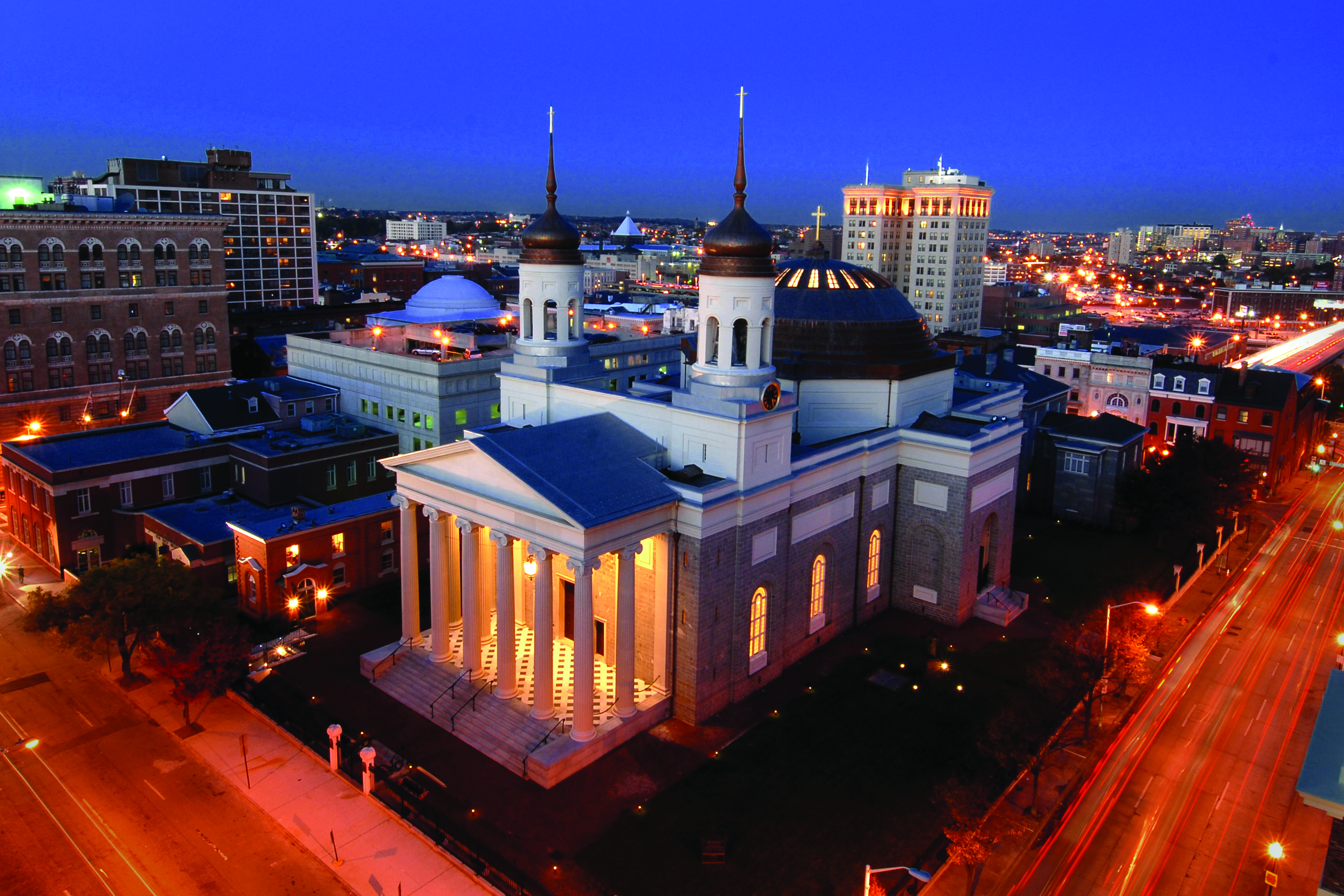
America's First Cathedral - The "Baltimore Basilica"
“Behold, God's dwelling is with the human race. He will dwell with them and they will be his people and God himself will always be with them.” (Revelation 21:3)
Some Background on this Basilica
In present day, known formally as the Basilica of the National Shrine of the Assumption of the Blessed Virgin Mary, this first-of-its-kind church in America dates back to the early 1800s. Archbishop Carroll laid the cornerstone for this cathedral (now basilica) in 1806, but unfortunately he would not live to see its completion. The Cathedral opened in 1821, six years after the death of Archbishop Carroll. Benjamin Henry Latrobe, famed designer of the U.S. Capitol building, was commissioned as the architect for this church which represented freedom of religion for the great young nation. It served as the cathedral for the Bishop of Baltimore. This prominent place of prayer and symbol of the Catholic Church in America, is known as “America's First Cathedral.” It was named a basilica in 1937 by Pope Pius XI. The Basilica underwent restorations in 2006 and is visited by over 100,000 each year.
Find out more on the history of the Basilica here: https://www.americasfirstcathedral.org/history/ . Before you go, check out this video summarizing the Maryland's Catholic history and the founding of the Basilica: https://youtu.be/DKQzrGaPYAs
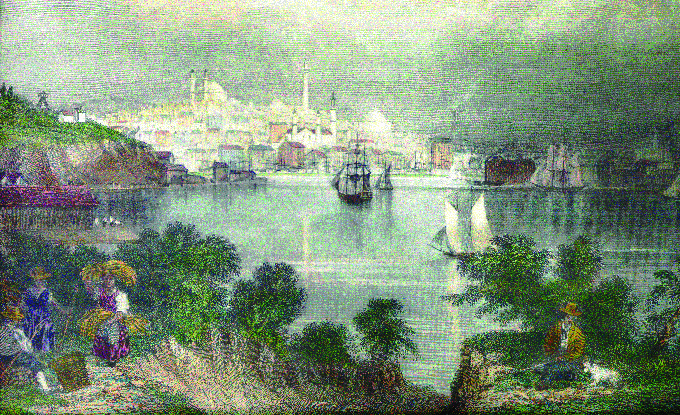
Baltimore's "Cathedral Hill" - 1840 photo courtesy of Basilica staff
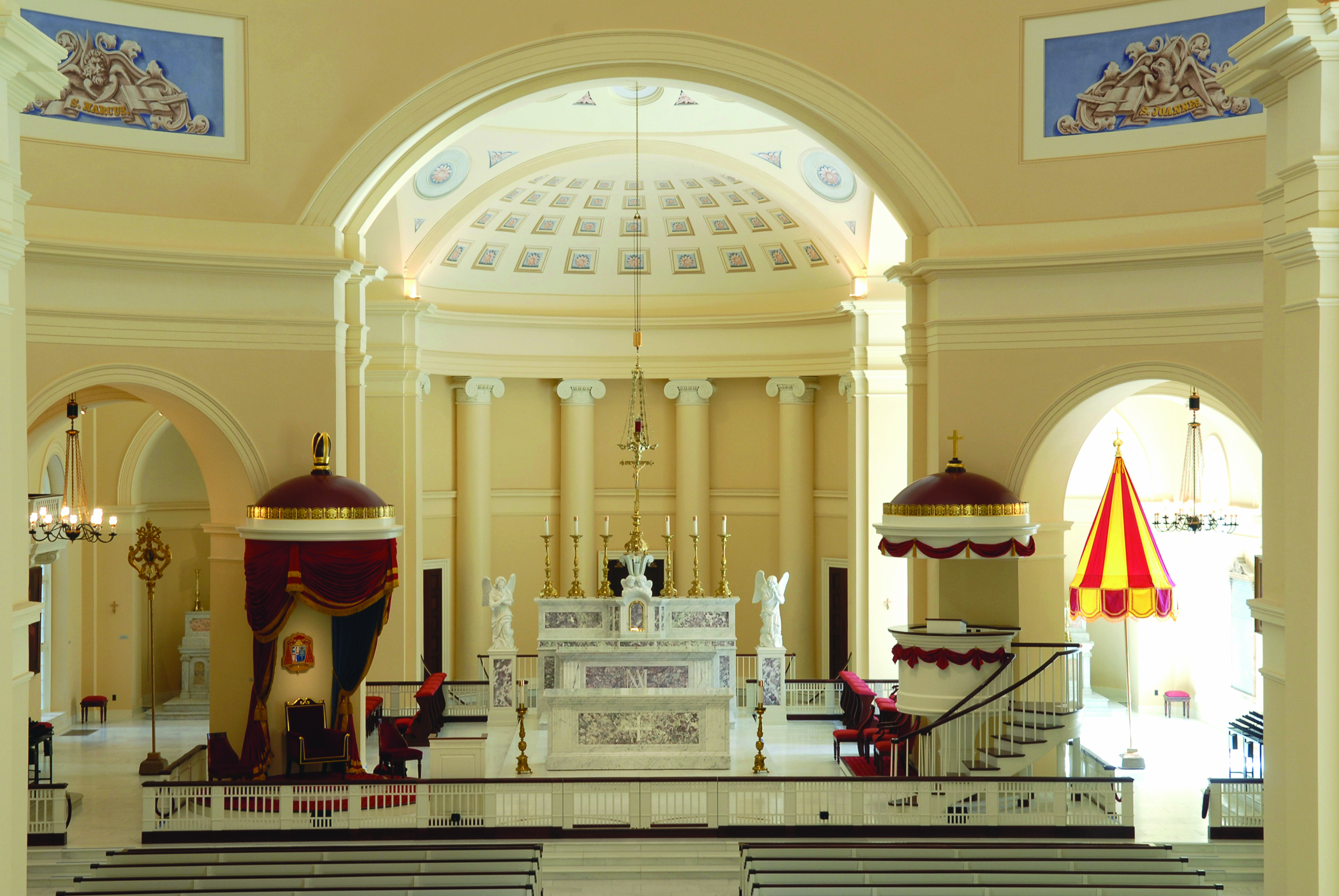
Interior of Basilica
For more on what makes a basilica a basilica - Check out the Encounter on the Basilica of St. Mary in Alexandria.
Basilica Tour
Click here for an amazing self-guided tour of the Baltimore Basilica: https://www.americasfirstcathedral.org/virtual-tour/. And check out this website for scheduling a tour of the Basilica: https://www.americasfirstcathedral.org/tours/
200th Anniversary
The Basilica recently celebrated 200 years since it's opening in 1821. Read more here: https://www.ncregister.com/news/baltimore-archbishop-tells-catholics-to-make-history-on-bicentennial-of-americas-first-cathedral and here: https://catholicreview.org/baltimore-basilica-looks-to-next-200-years/
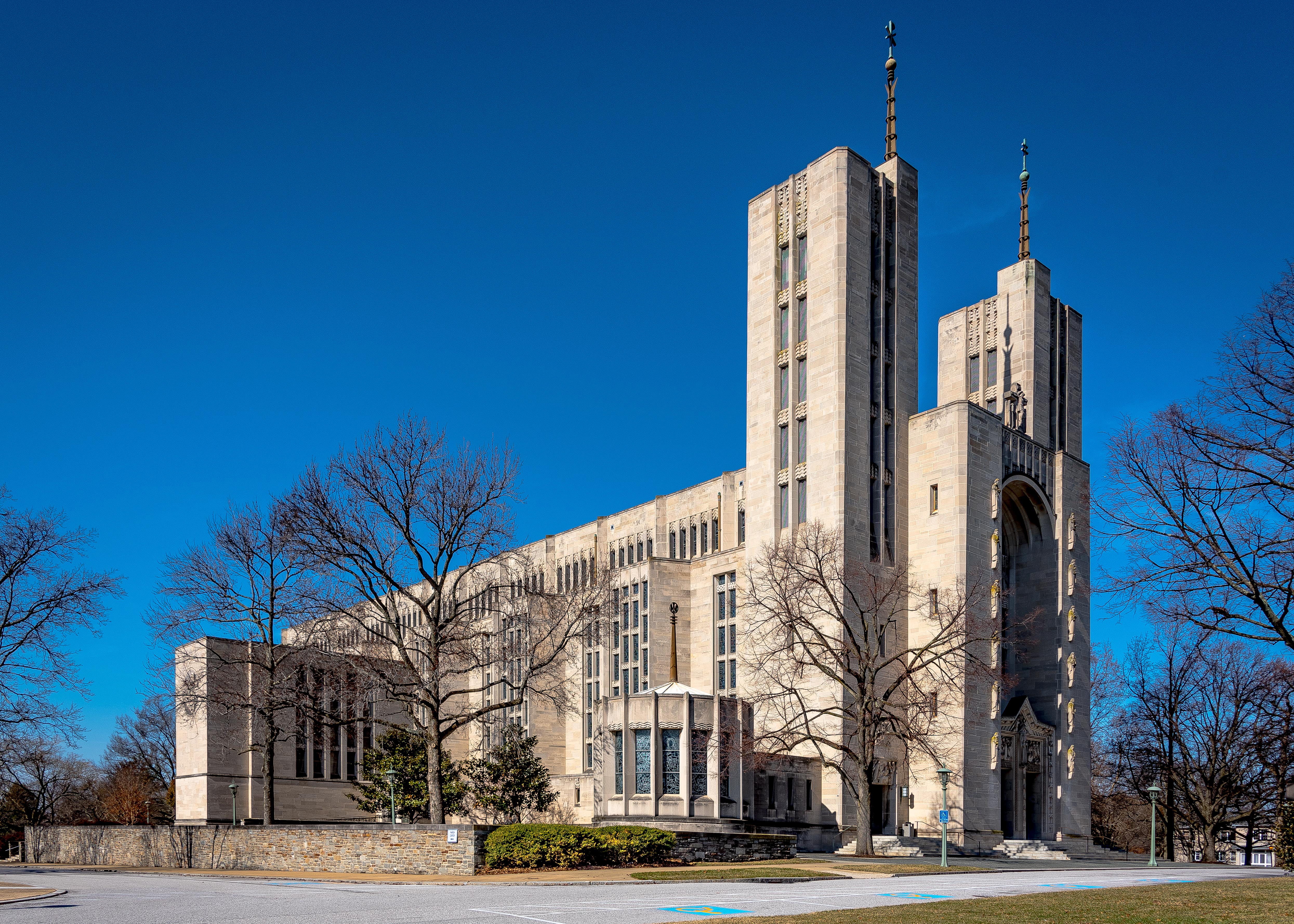
The Cathedral of Mary Our Queen
“Blessed are you, daughter, by the Most High God, above all the women on earth…” (Judith 13:18)
In a fairly unique arrangement, Baltimore is home to a centuries-old basilica which served as the Archbishop's cathedral for many years. Then, just a few miles across town is the newer diocesan church, serving as the official cathedral for the Archdiocese.
Groundbreaking began for the Cathedral of Mary Our Queen in 1954. It was completed in 1959.
The Cathedral was made possible due to the generous gift of one man: Thomas O'Neill. O'Neill owned a department store in Baltimore. During the Great Baltimore Fire of 1904, flames were raging toward his store. This fire ravaged over 1,300 buildings. Just as the onslaught reached the south wall of his store, the wind changed directions and his store was spared. Legend had it that O'Neill sped off to a Carmelite convent to ask for the prayers of the sisters. Whatever the case, O'Neill must have found the saving of his store very fortuitous. In his will, he set aside a large sum of money to go toward a new, larger Baltimore Cathedral.
For more on the history of the Cathedral, click here: https://www.cathedralofmary.org/about
What is a cathedral?
The cathedral of a diocese is the official “mother church” or principal church of that diocese - because it is the specially designated church for the bishop. It serves as a symbol of the authority of the bishop over his local flock and as a sign of unity for all other churches in the diocese. The bishop's seat, which is a sign of his authority, is enthroned in the cathedral. The word “cathedral” actually comes from the word that means chair in Latin: cathedra (pronounced “CATH-eh-druh”). The cathedra is a symbol of the bishop's teaching authority in the Church. Moses sat on a chair and taught; many would come to learn from him (see Exodus chapter 18). Thus the seat of Moses came to be seen as a sign of his teaching authority. Likewise, the Bishop's seat or cathedra became a similar sign. The cathedra is an actual seat in the cathedral church; it is where the diocesan Bishop sits when he celebrates Mass or other important liturgies and prayer services.
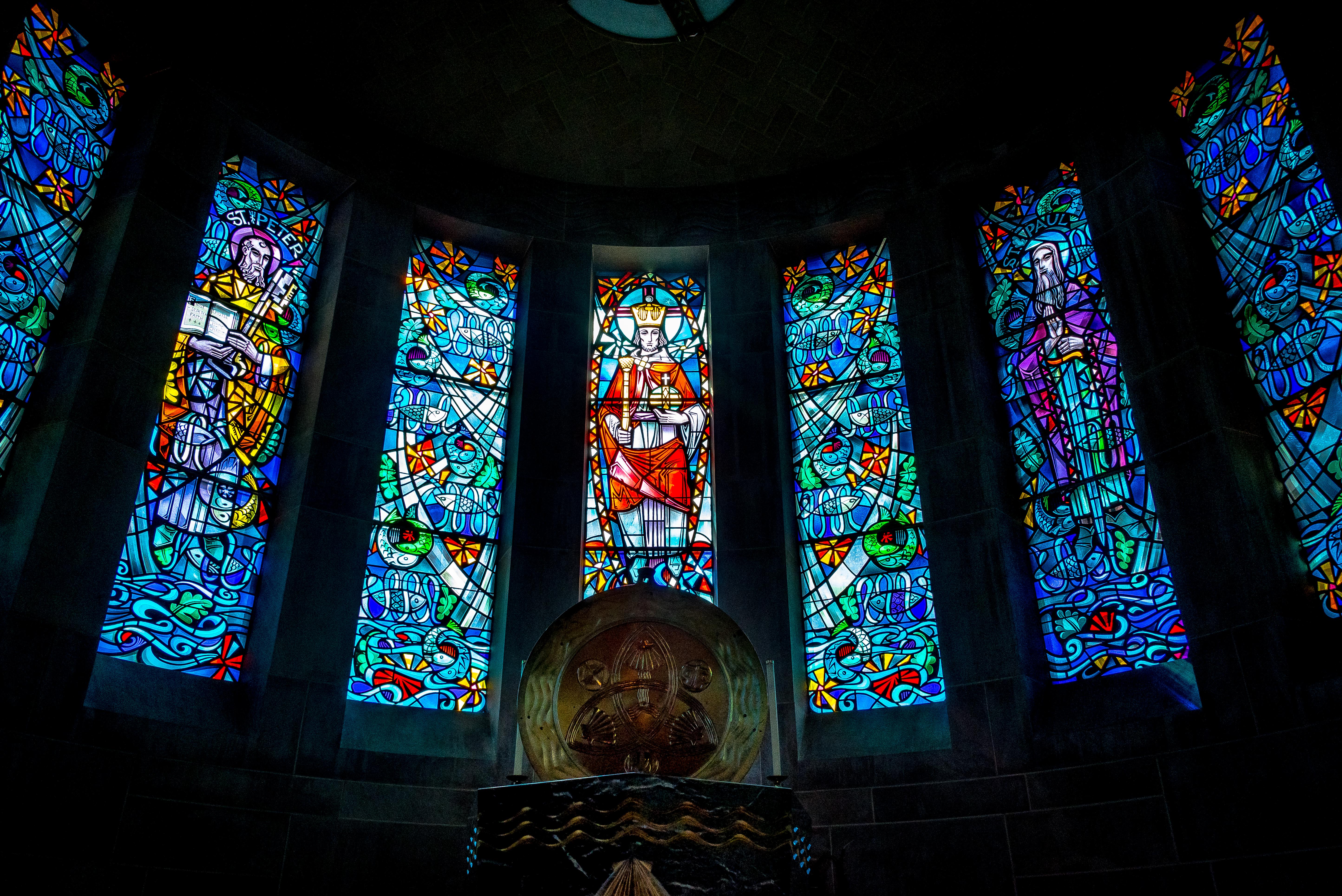
Stained glass imagery in the Cathedral of Mary Our Queen
Cathedral of Mary Our Queen Tour
Cathedral guides are available after every weekend Mass for a tour. Or schedule one here: https://www.cathedralofmary.org/contact/schedule-a-tour
Check out this video for a glimpse inside the Cathedral: https://www.youtube.com/watch?app=desktop&v=WNpw5Qcsxxw.
What is the difference between a diocese and an archdiocese and bishop and archbishop?
Dioceses are grouped together in an ecclesiastical province, under the leadership of a bishop of a diocese, chosen by the Pope. The diocese that oversees the province is called an archdiocese. The bishop of an archdiocese is called an archbishop, the bishop of a diocese under the leadership of the archdiocese is simply referred to as bishop. The Archdiocese of Baltimore serves as the head diocese for the ecclesiastical province of which the Diocese of Arlington is a part.
Other Attractions in Baltimore
Fort McHenry
Fort McHenry is a fort which served as a defense of the Port of Baltimore. Located on Locust Point, Fort McHenry was built between 1798-1800. It replaced Fort Whetstone and was named after James McHenry, U.S. Secretary of War, who served under Presidents George Washington and John Adams. Find out more about this historic fort at this website: https://www.nps.gov/fomc/index.htm
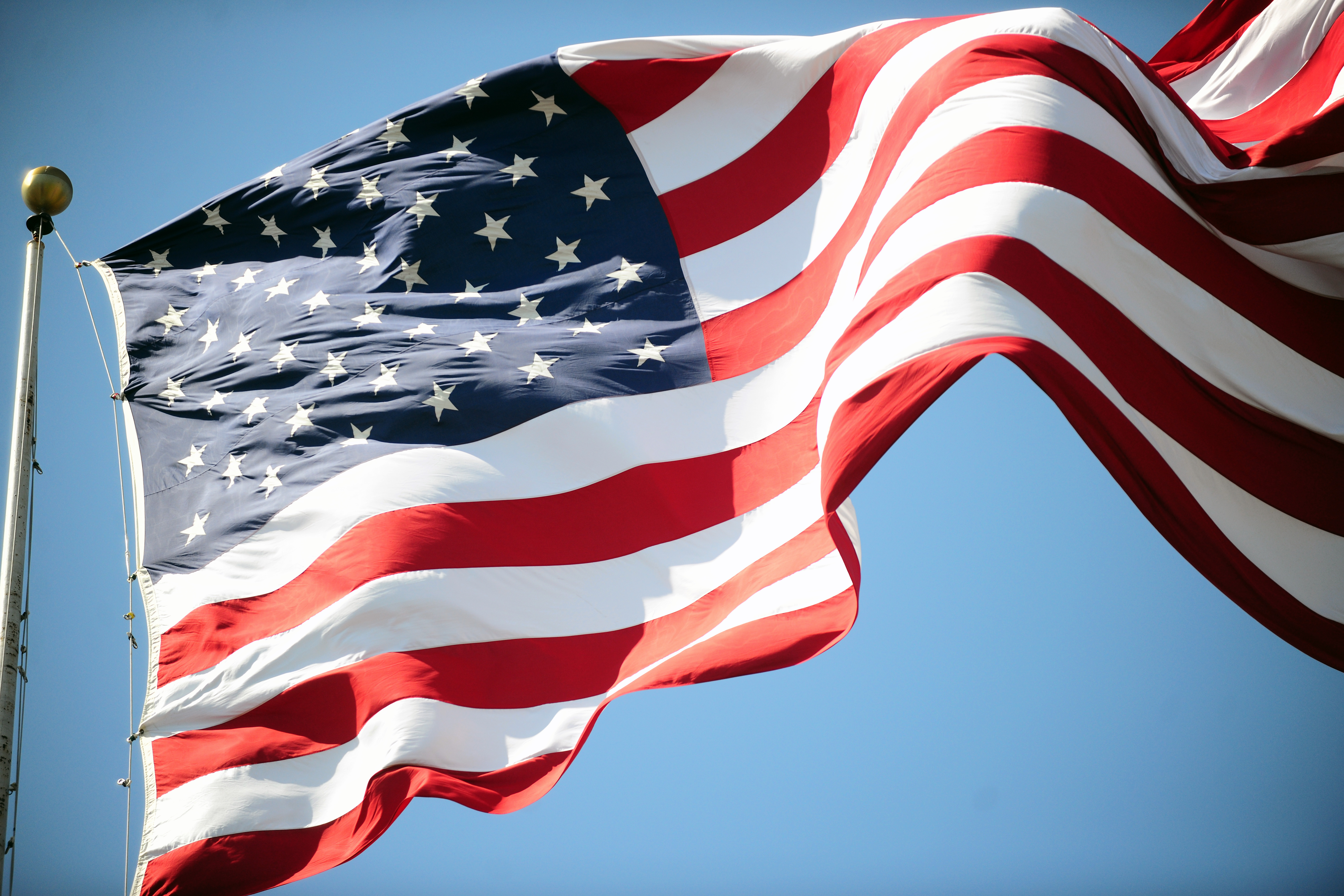
"Memorial Day Ceremony May 24 2012" by Presidio of Monterey: DLIFLC & USAG is marked with CC PDM 1.0
The Star Spangled Banner was written by Francis Scott Key at Fort McHenry in 1812. Find out more here: https://www.nps.gov/fomc/learn/historyculture/the-national-anthem.htm
The National Aquarium
Visit the National Aquarium! With an attendance of 1.5 million visitors per year, it is Maryland's largest tourist attraction. If you have never been, you may want to plan on spending 3 or 4 hours there as a family! Find out more here: https://aqua.org/
Maryland Science Center
The Science Center is located in Baltimore's Inner Harbor. With three levels of exhibits, a planetarium, and an observatory, it is a great place to take the whole family! They have limited hours, so you will want to check in advance. Click here for more information: https://www.mdsci.org/
Edgar Allan Poe House, Museum and other Sites
Get to know Poe's Baltimore! Edgar Allan Poe was born in Boston in 1809. Both of his parents died when he was very young. He was taken in by a wealthy tobacco merchant, John Allan, in Richmond, Virginia. As a young adult, Poe became estranged from his care-giver John Allan and moved to Baltimore to be near some relatives there. One of these relatives, his aunt, Maria Clemm, was like a mother to him. He died mysteriously in Baltimore in 1849.
Visit the house (which is now a museum) where he lived on North Amity Street. Find out more here: https://www.poeinbaltimore.org/poe-places/. Reservations are needed, plan ahead!
Places to Eat
Dylan's Oyster Cellar: https://dylansoyster.com/ - Top-rated restaurant in Baltimore! Seafood lover? You'll want to check this place out!
La Tavola: https://la-tavola.com/ - Italian fare, including seafood, located in Baltimore's Little Italy District.
Friends and Family: https://www.friendsandfamilybaltimore.com/- Delicious vegetarian and vegan options
Matthew's Pizzeria: http://matthewspizza.com/ - Founded in 1943, Matthew's Pizzeria boasts being Baltimore's first pizzeria!
Cocina Luchadoras: https://cocinaluchadoras.com/ - Highly rated, Cocina Luchadoras serves up a favorite Mexican menu!
Don't forget dessert!
BMORE LICKS:https://bmorelicks.com/ - About 2 miles east of the Inner Harbor, highly acclaimed BMORE LICKS will satisfy your sweet tooth! With several ice cream flavors, the whole family is sure to enjoy!
The Charmery is another well-reviewed location for the sweet at heart - about 4.5 miles north of the Inner Harbor: https://www.thecharmery.com/.
Sample Schedule
Check the Basilica and Cathedral websites to confirm Mass times: https://www.americasfirstcathedral.org/ and https://www.cathedralofmary.org/. With driving time to and from Baltimore and two churches to visit, plus possibly a meal and other attractions, you may want to decide as a family which church to spend the most time at. Note that the Basilica does not offer a Saturday morning Mass. If you would like to go to confession, bear in mind that confessions are not offered on Saturdays at the Basilica; the Cathedral offers the Sacrament of Reconciliation before the Vigil Mass. See suggested Saturday schedule below:
7:30 am Depart Northern Virginia
9:00 am Visit Basilica - self-guided or guided tour (schedule ahead) and personal prayer
10:30 am Visit Fort McHenry
12:00 pm Picnic lunch at the fort
1:00 pm National Aquarium, Maryland Science Center, or Poe House
4:00 pm Confessions at Cathedral
5:00 pm Mass (vigil for Sunday) at Cathedral followed by tour
6:30 pm Dinner (see options above)
8:30 pm Dessert and head home, discuss the day (see questions below)
Tying it All Together…
Perhaps reflect on the following questions and suggestions as a family or youth program over dinner or on your drive home:
- What inspired you during our visit to the Basilica or the Cathedral today?
- Did something in the art or history you observed today stand out to you?
- What can we learn from the faith and determination of Maryland's founding Catholics? How can that encourage you in your faith?
- Both the Basilica of the Assumption and the Cathedral of Mary Our Queen are named after Mary, the Blessed Mother. In what ways can you grow in your devotion to Mary, the Mother of Jesus?
- In what ways have you grown closer to Jesus as a result of today's Encounter?
- Perhaps pray a Rosary as a family on the way home.
After this Encounter, what's next?
For even more on the Catholic history and places of prayer that the Baltimore and broader Maryland area offer, check out this website: https://www.americasfirstcathedral.org/baltimore-catholic-heritage-sites/. And be sure to participate in Encounter Emmitsburg to discover the life and legacy of St. Elizabeth Ann Seton!
Get to know your local parish a bit more. Rediscover your local parish church; what is the history and meaning behind it? Perhaps cultivate a stronger devotion to Mary, the Blessed Mother; why not pray a Rosary or at least a decade of the Rosary daily? Find out more about the Rosary here: https://www.usccb.org/how-to-pray-the-rosary.
If you have not already, discover the Cathedral and Basilica right here in the Diocese of Arlington! Take part in the Cathedral of St. Thomas More Encounter and the Basilica of St. Mary Encounter.
Works Cited
Britannica.com on George Calvert: https://www.britannica.com/biography/George-Calvert-1st-Baron-Baltimore-of-Baltimore March, 2021
On the history of Maryland, from Maryland.gov: https://sos.maryland.gov/mdkids/Pages/Maryland's-History.aspx March, 2021
Archdiocese of Baltimore website, on the life of Archbishop John Carroll: https://www.archbalt.org/most-rev-john-carroll/ March, 2021
New York Public Library's Public Domain Archive: https://nypl.getarchive.net/media/the-most-reverend-john-carroll-dd-first-archbishop-of-baltimore-670955 June, 2021
Britannica.com on the history Baltimore: https://www.britannica.com/place/Baltimore March, 2021
Archdiocese of Baltimore website, on St. Peter's Pro-Cathedral: https://www.archbalt.org/the-archdiocese/st-peters-pro-cathedral/ March, 2021
The Basilica of the National Shrine of the Assumption, history: https://www.americasfirstcathedral.org/history/ March, 2021
Video on history of Basilica: https://youtu.be/DKQzrGaPYAs March, 2021
Tour and visiting info for Basilica: https://www.americasfirstcathedral.org/tours/ June, 2021
National Catholic Register article on the Basilica's Bicentennial: https://www.ncregister.com/news/baltimore-archbishop-tells-catholics-to-make-history-on-bicentennial-of-americas-first-cathedral June, 2021
History on the Cathedral, from Cathedral's website: https://www.cathedralofmary.org/about March, 2021
Canon Law Made Easy post: https://canonlawmadeeasy.com/2009/12/17/bishops-archbishops-and-cardinals/ May, 2021
Article on National Aquarium: https://en.wikipedia.org/wiki/National_Aquarium_(Baltimore) March, 2021
Article on Maryland Science Center: https://en.wikipedia.org/wiki/Maryland_Science_Center May, 2021
Edgar Allen Poe Museum website: https://www.poemuseum.org/poes-biography March, 2021
Photos of Cathedral and Basilica: courtesy of Cathedral and Basilica staff - May 2021